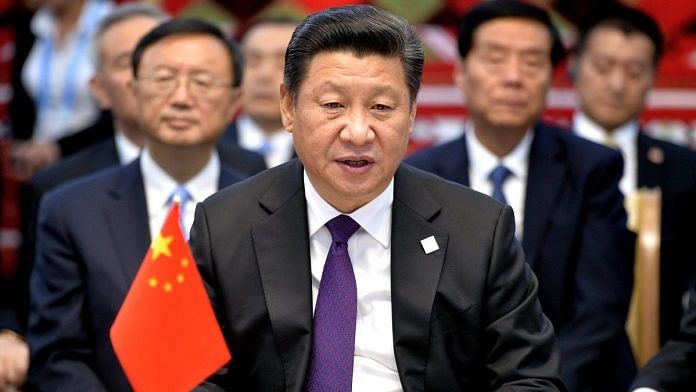Purges and anti-corruption campaigns have long been a fixture of China’s political landscape. The current phase of this campaign traces its roots to the dramatic fall of Bo Xilai, the former Party chief of Chongqing and a prominent Politburo member, who was seen as a potential rival to President Xi Jinping. A central focus of Xi’s anti-corruption drive has now been the military. Since the 18th National Congress of the Chinese Communist Party, China has initiated a “zero tolerance” crackdown on corruption. To date, 14 generals, 22 lieutenant generals, and 85 major generals have been investigated and penalised for breaches of discipline and law.
Just last week, Miao Hua, director of the Political Work Department of the Military Commission, was placed under investigation. Meanwhile, the whereabouts of former Foreign Minister Qin Gang remain shrouded in mystery with no official word on his removal. A recent Financial Times report also suggests that incumbent Defence Minister Dong Jun is facing corruption charges, following the dismissal of his predecessor Li Shangfu on similar charges last year. The only mention of Dong on Baidu pertains to his recent official engagements, including his refusal to meet the US Secretary of Defence at the ADMM Plus in Laos, which is framed as a lesson to the United States.
These developments raise critical questions: Can trust in the People’s Liberation Army (PLA) be maintained? Is there an internal rift within its ranks, along with growing resentment towards Xi? What impact might this have on China’s 2027 modernisation agenda?
While Xi’s anti-corruption campaign continues to target the military, discussions circulating on Chinese internet platforms suggest that its implications may extend far beyond the armed forces and are primarily focused on eradicating corruption.
Also read: Why India shouldn’t join RCEP. It will stifle economy, undo PLI progress
A longstanding issue
Corruption within the government and military has been a persistent problem in China, dating back to the establishment of the People’s Republic of China (PRC), accompanied by various purges. From December 1951 to October 1952, China’s first anti-corruption campaign targeted 1,08,000 cadres, resulting in 9,942 imprisonments, 67 life sentences, 42 executions, and nine suspensions.
However, this issue became more pronounced since the economic reforms initiated by Deng Xiaoping. Now, the anti-corruption campaign has taken on a new dimension under Xi. The current campaign is seen not only as an effort to combat corruption but also as a means to eliminate opposition and potential rivals.
Chinese internet users, however, don’t generally view these purges merely as a consolidation of Xi’s power but as an attempt to address deep-rooted systemic issues. The Chinese public discourse rarely focuses on individual targets.
There is widespread support for the idea of ‘cleaning up’ the country. One commentator remarked, “This clean-up operation is not only to protect national security but also to defend national dignity. We cannot tolerate any betrayal or disloyalty to the country. We must show the world, through concrete actions, that China is a united, strong, and inviolable nation.”
Also read: Is Xi’s system failing? There is a leadership vacuum in China’s PLA
What is the solution?
While there may be consensus on the widespread corruption among government and military officials and the need to deal with corrupt officials, opinions diverge on Xi’s approach. This debate is visible on Weibo but largely absent from major online platforms like Baidu, Guancha and NetEase.
Yang Hengjun, a Chinese-Australian writer currently sentenced to death by China on charges of espionage, wrote a decade ago, “I am a strong supporter of anti-corruption campaigns, but I have reservations about campaign-style anti-corruption.” He warned that corruption is rising, the wealth gap is widening, and social morals are declining. He attributed this to the leadership’s failure to act, cautioning that public frustration would grow and lead to calls for reform if no changes were made.
A Weibo user argued that China should adopt an institutional, rather than campaign-based, approach to anti-corruption, warning that corruption would resurface once the spotlight fades. Similarly, another user contended that China’s issue is not corruption itself but the systemic link between power and wealth concentration. The user suggested that without reforming the rules and structures that enable wealth to flow to power, anti-corruption campaigns would remain superficial. He further emphasised the need to address the root causes by overhauling these systems, rather than merely punishing individuals.
The ongoing purges are unlikely to profoundly influence China’s foreign or military policies, as decisions are made by Xi, and the country operates under a top-down approach. Within China, they are largely viewed as Xi’s efforts to clean up the country, with a focus on securing the loyalty of successors. This may work to Xi’s advantage, serving multiple purposes: winning public support by portraying himself as the custodian of the country, preventing factionalism, and prioritising modernisation by eliminating corruption.
However, as the list of purged officials grows, it may create rifts and insecurity within the Party, raising concerns about who could be the next target and leading to an increasing, blind loyalty to Xi. This could push China further towards one-man rule. The critical question remains: how long can Xi maintain centralised control without provoking growing instability within the ranks of the CCP?
Sana Hashmi is fellow at the Taiwan-Asia Exchange Foundation. She tweets @sanahashmi1. Views are personal.
(Edited by Theres Sudeep)






